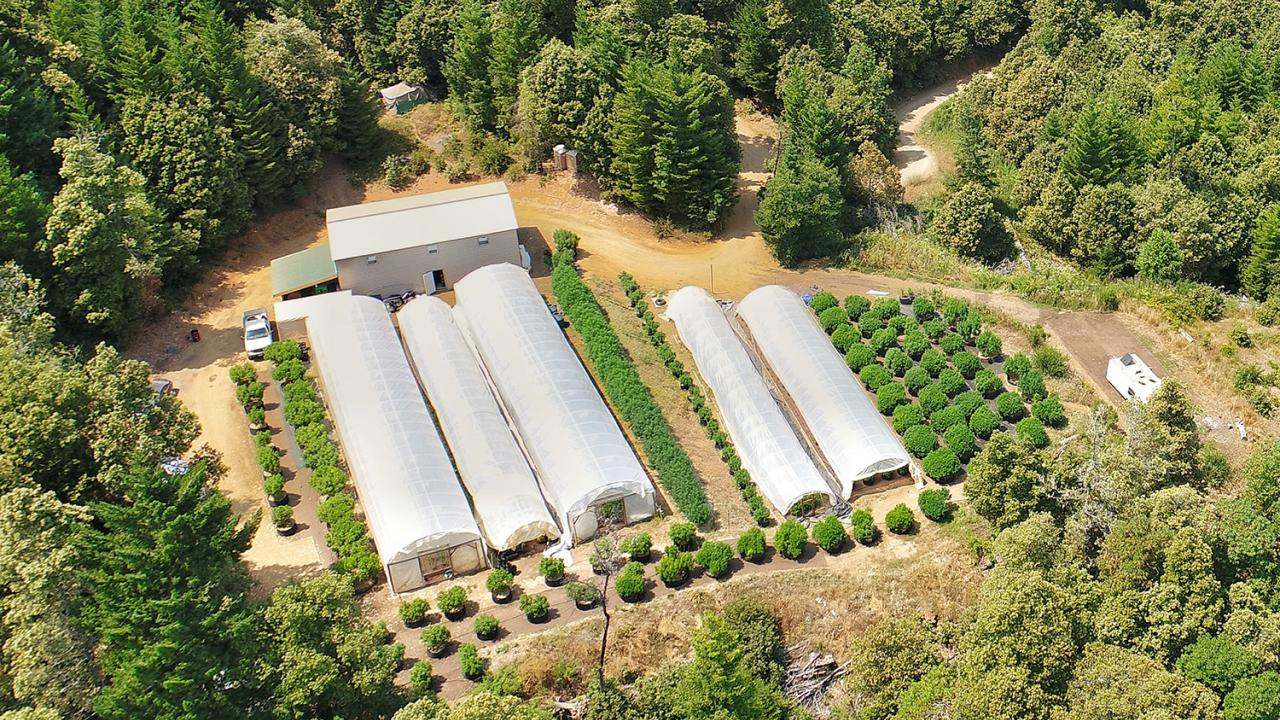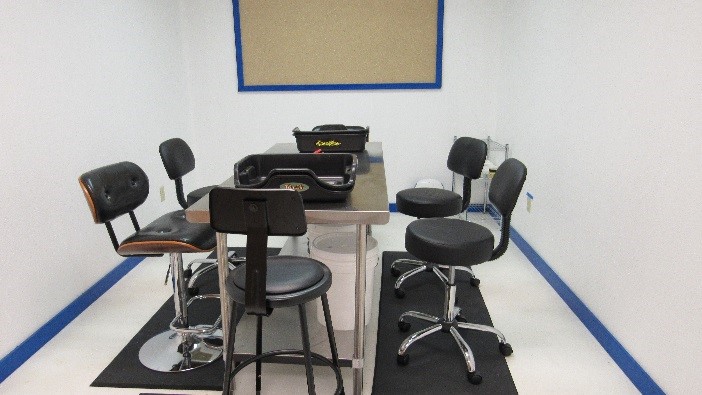
Cannabis Farmworkers' Safety and Health
Cannabis in California
Cannabis is the highest valued—albeit covert—agricultural product in California, with an estimated annual $23.3 billion in cash farm receipts. Approximately 13.3 million pounds of cannabis were produced in California in 2016. Between 165,000 and 230,000 farmers and farmworkers are estimated to be employed in California’s cannabis industry. The region known as the Emerald Triangle in Northern California is the United States’ largest cannabis production region, and it includes Mendocino, Humboldt, and Trinity Counties. This region has between 10,000 and 14,000 farms, largely hidden in remote areas in forested and hilly terrain. The locals claim that everyone living in the Emerald Triangle is either directly or indirectly reliant on the cannabis industry. Unfortunately, due to the illegal nature of most cannabis production in the U.S., very few studies have addressed the health and safety hazards related to working in the cannabis industry (Fig.1).

Beginning in January 2018, both medical and recreational production of cannabis in California became legal as long as growers have gone through a permitting process and have qualified for a license. A new bill also requires cannabis producers to train employees in worker safety within one year of receiving their license. However, with the current lack of information about the work-related health and safety issues in this industry, there is an urgent research need to identify the major hazards. This information could be developed into health and safety plans which are critically needed for worker training.
Products
Cannabis production includes several steps: planting, cultivating, harvesting, and processing. There are three types of cannabis consumption: smoking, edibles, and creams and ointments. Depending on the type of intended use, different processing steps are involved. Processing flowers for combustion inhalation clearly represents heavy worker input to carry out the steps of drying, destemming, trimming, weighing, and packaging. Destemming is the removal of flowers from stems, and trimming is the removal of small leaves from flowers to make them presentable. Destemming and trimming can be done manually or mechanically. Figure 2 shows trimming tables at a farm and processing plant. Destemming and trimming may cause ergonomic problems such as forceful exertions, repetitive and prolonged static postures sitting at work stations, awkward posture (twisting joints), continued physical contact with hard work surfaces, inappropriate and inadequate hand tools that may result in cumulative trauma disorders, repetitive stress injuries, and musculoskeletal disorders. Each production step affects workers’ safety and health in specific ways. Cannabis processing for edibles and topicals is likely present some of the same safety concerns, as well as unique issues.


Safety and Health Hazards in the Cannabis Industry
The cannabis industry involves safety and health hazards that are biological, chemical, and physical in nature. Some hazards are related to farming and processing, while others are related to cannabis production with the presence of the active ingredient of cannabis - tetrahydrocannabinol (THC), and growth enhancers carbon monoxide (CO) and carbon dioxide (CO2). The table below identifies some of these hazards.
| Fungi, bacteria | Tetrahydrocannabinol (THC) | Compressed gas |
| Sensitizers/allergens (dermal) | Carbon monoxide (CO) | Occupational injuries (sharp objects, hot/cold surfaces |
| Sensitizers/allergens (respiratory) | Carbon Dioxide (CO2) | Ergonomics, body mechanics |
| Pesticides | Workplace violence | |
| Disinfectants | Walking and working surface | |
| Cleaning chemicals | Working on height | |
| Nutrients corrosives | Electrical | |
| Noise | ||
| Environment | ||
| Powered industrial trucks | ||
| Lighting hazards | ||
| Machines | ||
| Extraction equipment | ||
| Confined space |
Our Project Goals
We are collaborating with another research project studying the cannabis industry led by Dr. Marc Schenker, funded under the Western Center for Agricultural Health and Safety emerging issues program. Our goal is to make cannabis production safer for farmers and farmworkers. With one year of support we have reviewed what minimal hazard research currently exists related to the industry in the United States. To understand the specific risks and exposures in California, we are in the process of visiting indoor and outdoor facilities. Our goal is to monitor and identify the major health risks in this industry.
Based on the information gathered, we will develop the means to further explore and quantify health and safety risks and create safety materials which can be implemented in outreach programs to educate workers and supervisors to minimize health hazards in the workplace. The eventual goal is to create a sustainable outreach program and continuing evaluation to improve worker health and safety.
